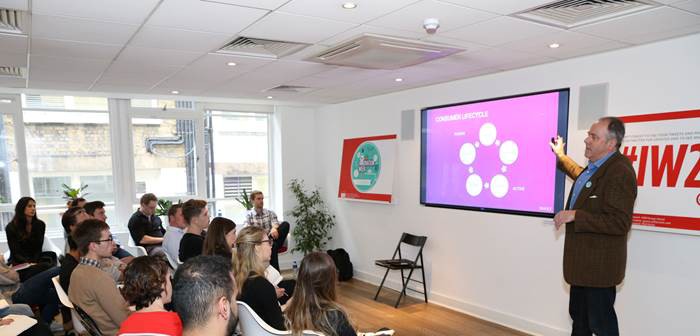There’s an old marketing legend that 7/11 decided to do some data mining and they struck gold. The most common purchase was beer… and nappies. Why? Because while mum was dealing with baby, dad was being dispatched to buy the diapers, and having done that, why shouldn’t he reward himself with beer?
Responsible parenting and gender politics aside, the narrative provides a powerful introduction to Yahoo’s compelling argument for data-driven marketing. Mike Bevans, Yahoo’s International Senior Director of Advertising Product Marketing, believes that digital marketing thrives on specificity, but can only be delivered when multi-touch data points are overlaid to give a holistic view of any brands key audience.
The Flawed Funnel
We all love the marketing funnel. Industry-wide it’s our communications go-to mechanism. But, says Bevan, we love it too much! It’s cannibalisation of our audience, demonstrating a limited understanding of how people interact with brands. Usefully Yahoo has identified a lifecycle for users using their wealth of data:
awareness – consideration – evaluation – purchase – loyalty
This approach screams common sense, driving towards a rounded view of digital marketing demanding personalisation and relevant messaging, using deep and unique insights, cross-device engagement and engaging formats. Look for market scarcity, where is saturation happening and where can you identify unique user insight to help find the gaps where your brand can shine. Yahoo is where one billion people come every month to engage in content, communication and search, so they know their data. With 650m users mapped to two or more devices globally and 85% UK impressions served to mapped users they are determined to practice what they preach.
Retargeting
Have you ever left a supermarket having purchased milk only to have someone chase you down the road trying to flog you a pint of semi-skimmed? No, because that would be an expensive waste of everyone’s time. But that, poses Mike Bevans, is what retargeting does all the time; tries to sell products and services already purchased. Retargeting is often just single data points (usually a page land) and it’s bad behaviour. The key to breaking the bad habits is to combine insights from multiple sources – location data, online and offline purchases, favourite content, or email information – to really nail the retargeting message and stop being that brand which contextually harasses the internet.
“The future of digital marketing is audience-centric, device and format agnostic,” is Bevan’s closing statement. Just take a look at the data.




